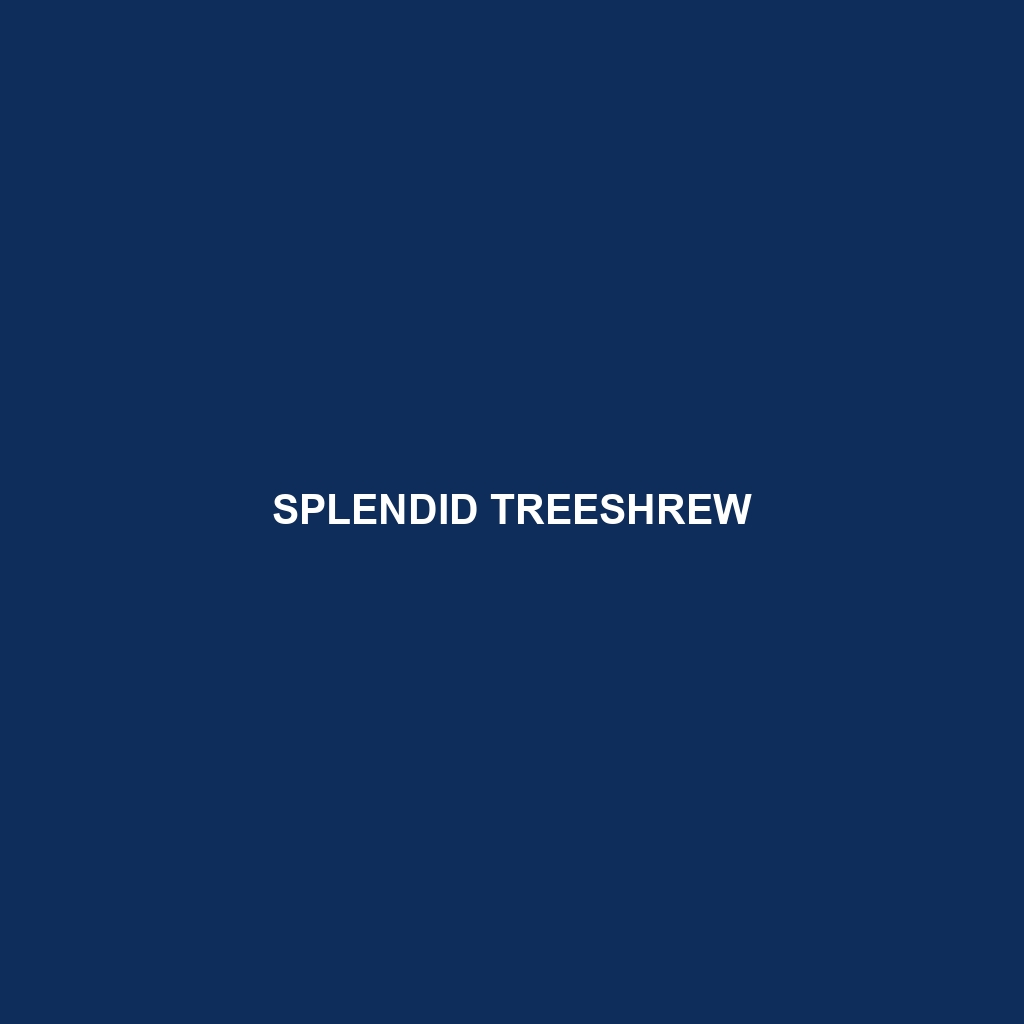Splendid Treeshrew: A Detailed Description
The Splendid Treeshrew (Ptilocercus lowii), often referred to as the Pen-tailed Treeshrew, is a small, nocturnal mammal native to Southeast Asia. Known for its distinctive tail and agile movements, this fascinating creature occupies a unique position in the animal kingdom, bridging the evolutionary gap between primitive insectivores and more advanced mammals like primates.
Physical Characteristics
Size: The Splendid Treeshrew is relatively small, with an average body length of 10-15 cm (4-6 inches) and a tail length of approximately 13-14 cm (5-5.5 inches). They typically weigh around 40-60 grams (1.4-2.1 ounces).
Coloration: Their fur is generally a mix of gray and brown, providing excellent camouflage in their natural habitat. They have a pale underbelly, which contrasts with the darker hues on their back and limbs.
Special Features: The most distinctive feature of the Splendid Treeshrew is its unique tail, which is feather-like and devoid of fur at the base, resembling the quill of a pen. This characteristic feature gives it the alternative name, Pen-tailed Treeshrew.
Behaviors
Social Interactions: Splendid Treeshrews are primarily solitary creatures. They communicate using a variety of vocalizations and scents to mark their territory and signal to potential mates.
Feeding Habits: They are omnivorous, feeding on a diet that includes fruits, insects, small vertebrates, and nectar. Their nocturnal nature means they often forage at night, utilizing their keen sense of smell and sight to locate food.
Ecological Roles: As both predator and prey, Splendid Treeshrews play a significant role in their ecosystem. They help control insect populations and disperse seeds, contributing to the health and diversity of their forest habitats.
Habitat
Geographical Range: Native to the dense forests of Southeast Asia, Splendid Treeshrews are found in countries like Malaysia, Thailand, and Indonesia.
Preferred Environment: They thrive in primary and secondary forests, often residing in the canopy layer where they can move with agility among the trees. Their nocturnal habits mean they prefer dense foliage that offers protection from predators.
Adaptations
Nocturnal Lifestyle: Adapted to a life in darkness, they have large eyes that enhance their night vision and acute hearing to detect even the faintest sounds.
Arboreal Adaptations: Their sharp claws and flexible limbs allow them to navigate the treetops with ease, making them adept climbers.
Dietary Flexibility: Their omnivorous diet allows them to exploit various food sources, ensuring their survival in diverse environments.
Conservation Status
Current Status: The Splendid Treeshrew is currently listed as “Least Concern” on the IUCN Red List, but habitat destruction and deforestation pose significant threats to their populations.
Conservation Efforts: Efforts to protect their forest habitats are crucial. Conservation initiatives focus on preserving natural forests and promoting sustainable land-use practices.
Fun Facts
Evolutionary Significance: The Splendid Treeshrew holds a unique evolutionary position, providing valuable insights into the transition between insectivorous mammals and primates.
Alcohol Consumption: Remarkably, Splendid Treeshrews are known to consume naturally fermented nectar from the bertam palm, showing no signs of intoxication despite the alcohol content.
Communication: They have a complex system of vocalizations, including high-pitched calls that are used for communication among individuals.
By understanding and appreciating the Splendid Treeshrew’s remarkable attributes, we can better appreciate the diversity and complexity of our natural world and the importance of conservation efforts to protect such unique species.
